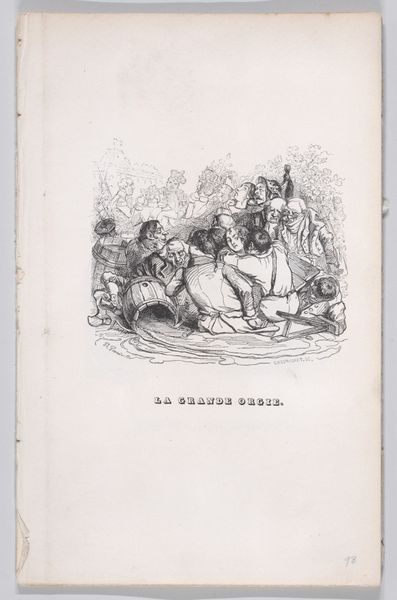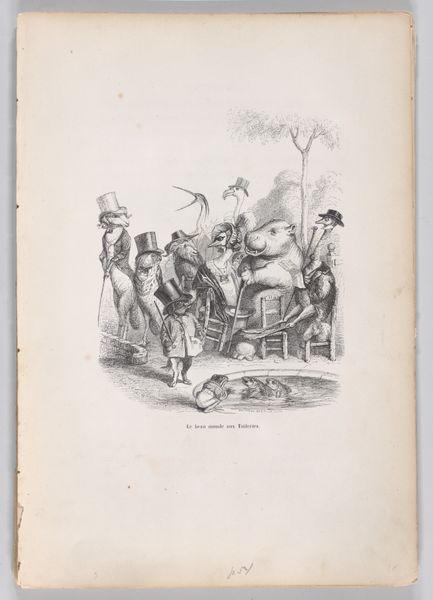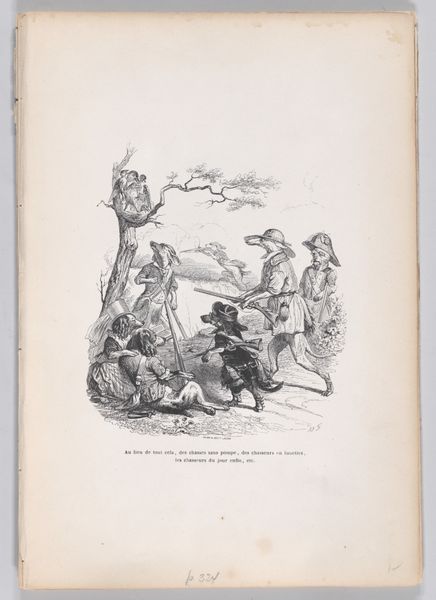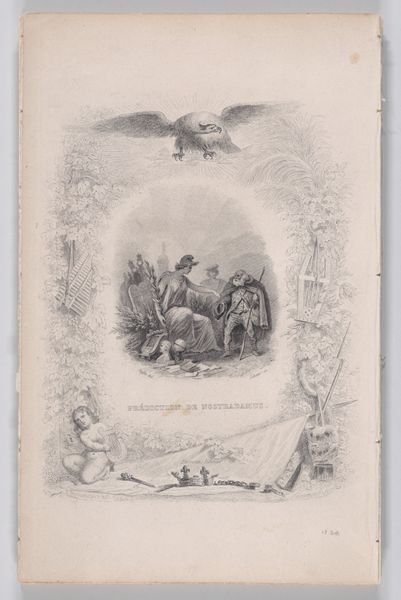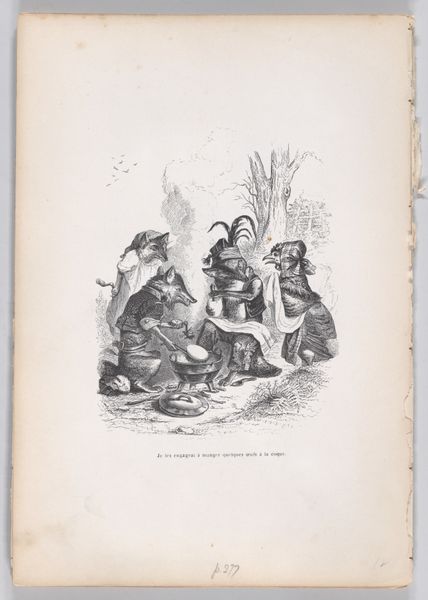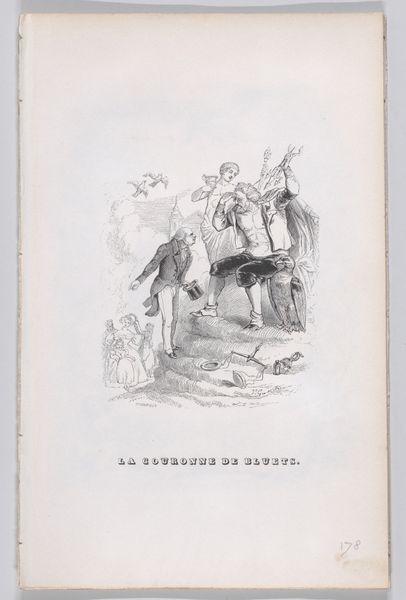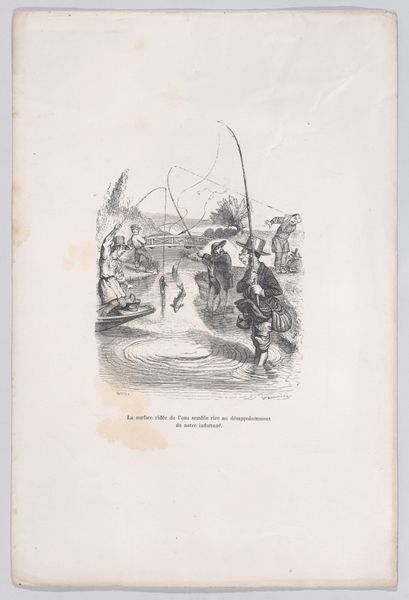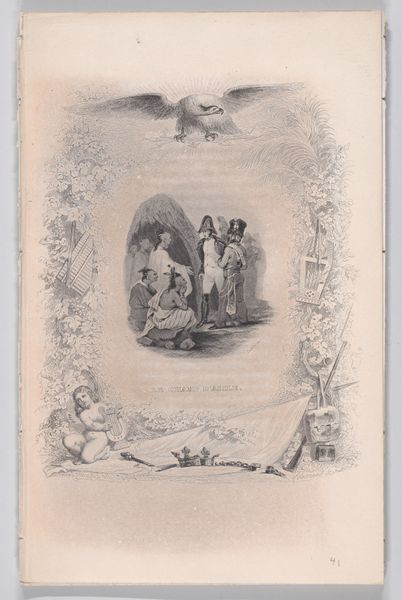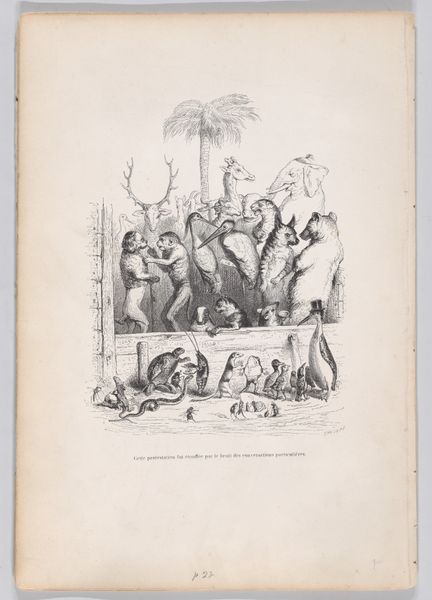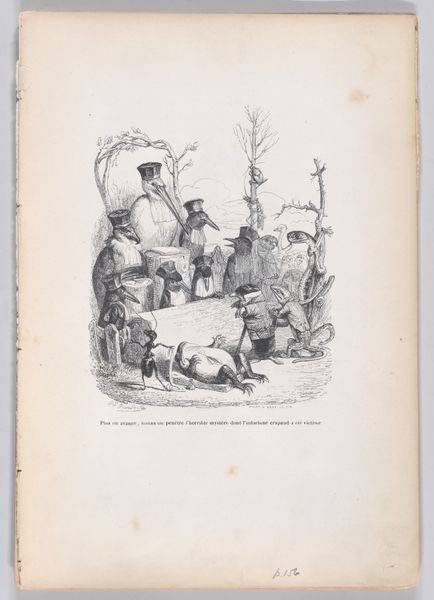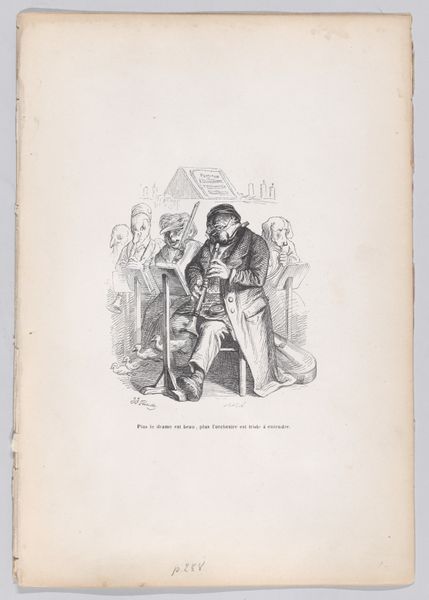
drawing, lithograph, print
#
drawing
#
narrative-art
#
lithograph
# print
#
figuration
#
romanticism
Dimensions: Sheet: 8 5/8 × 5 1/2 in. (21.9 × 14 cm)
Copyright: Public Domain
Editor: Here we have "My Burial" by J.J. Grandville, a lithograph drawing printed in 1836. The procession feels almost like a child's imaginative play – lots of miniature figures participating in this elaborate burial scene. What draws your attention when you look at it? Curator: Well, the lithographic process itself is central. Consider the labour involved: the artist meticulously drawing on stone, the printer's skill in transferring that image. And then think about its reproduction; prints like these made art accessible to a wider public. Editor: That's true; I hadn’t really considered the democratizing aspect. Does the subject matter itself – a staged burial – say something about consumerism? Curator: Precisely! We could argue that the “burial” is of an older form of expression giving way to new possibilities engendered through printmaking. Think about the waste involved in artistic creation. Each print leaves something unused, what we might call "waste", which is still very much part of that art's means of production and its circulation. Editor: That makes sense. The image almost feels celebratory. It’s quite bizarre! Curator: The artist’s material engagement is what interests me. Grandville manipulates the lithographic stone, but is then also beholden to the work the printers do. I wonder about the artist’s awareness about the printers and the division of labor necessary in creating his prints. Editor: So it’s less about the image itself and more about the context of its making. It gives the piece a whole new dimension. Curator: Exactly. Focusing on the materials and the making of the artwork broadens our understanding beyond the simply representational. We have to think about where these works were being printed and consumed in Parisian society. Editor: I see the Romantic influence, but examining its production adds layers. I now understand it’s about making art more widely available, as a commodity that reflects wider trends in nineteenth-century Paris. Thanks for the insights!
Comments
No comments
Be the first to comment and join the conversation on the ultimate creative platform.
